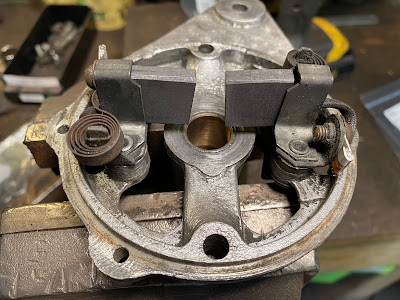Main part of the cooling system is the radiator. I had no real idea if it worked or not.
There were a few things that on initial inspect were obviously needing attention.
Like these cuts in the shroud which presumably were because the fan was hitting it.
Decided to check how the cooling fins were, so with a screw driver carefully straightened what I could and also used my air compressor to blow a lot of air to clean out what dirt and muck I could. Then I put a lamp behind and had a look.
From what I could see there were no blockages, so the next test was to see if it held water at all. So I blocked off the inlet and outlet pipes and filled it up by the garden hose.
Whilst the test did suggest it would hold water, I was not expecting peanuts to come flooding out!!
The radiator was stored in the eves of the garage for a long while and I do remember having a mice problem for a few weeks. I used to leave peanuts out for the birds to eat, but sometimes the squirrels got to the feeder and the nuts went everywhere so I stopped buying them.
I can only assume the mice joined in the banquet and stored them in a nice dry larder, namely my radiator.
Thing was I just couldn't believe how many eventually came out. Must have been 50 or 60 odd.
So now I needed to finish cleaning it up and repairing the shroud and the mounting bolts.
The trusty wire wheel did a good job on the frame, taking care not to damage the cooling fins.
The two welded bolts at the bottom of the radiator mount seemed ok, until I fitted it properly and found rust had done its damage to the treads, so ended up replacing them as well in a similar fashion. Wasn't impressed I'd missed that and didn't take any photos.
But all being done I could then prime.






































































